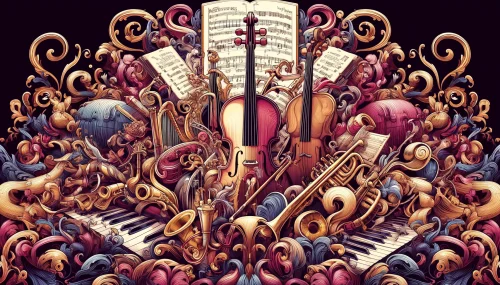Baroque pop, emerged in the mid-1960s as artists sought to infuse pop music with the sophistication and complexity of classical music, particularly from the baroque period. Characterized by its use of orchestral instruments and intricate arrangements, baroque pop stands out for its ability to blend the ornate and the accessible. Pioneered by bands like The Beach Boys and The Beatles, and later embraced by artists like Love and The Left Banke, baroque pop represents a fusion of old-world elegance and modern innovation. Take a closer look at the diverse instrumentation that contributes to the genre’s rich, textured sound, moving beyond the familiar harpsichord to uncover the full spectrum of its orchestral influences.
The Harpsichord: A Starting Point
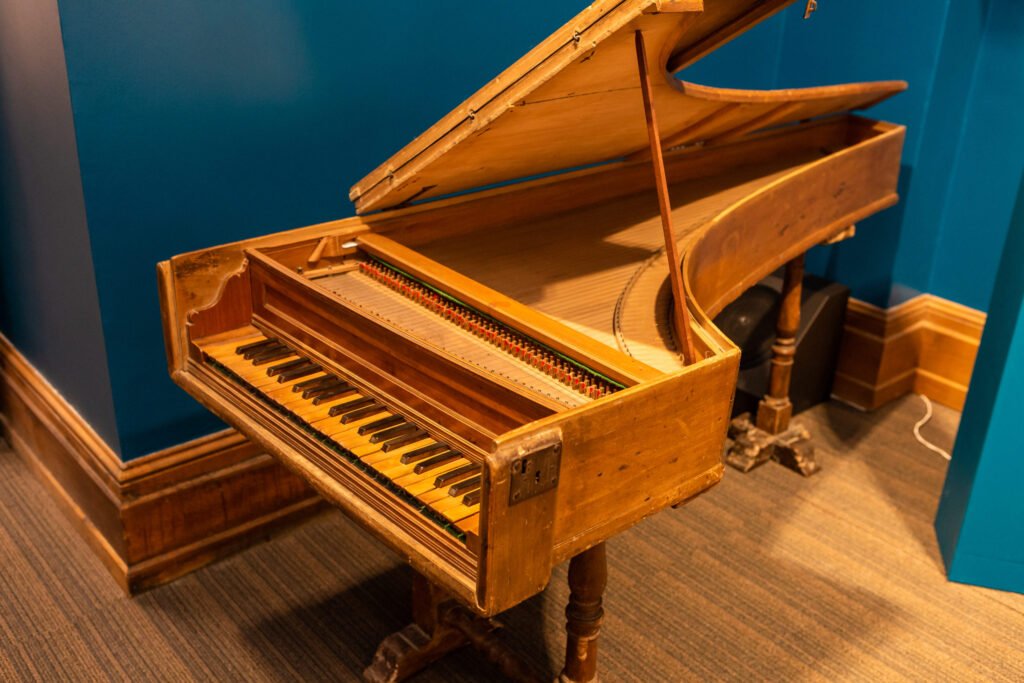
The harpsichord, a precursor to the modern piano, was a central instrument in baroque music from the 16th to the mid-18th century. Its distinctive, plucked-string sound provided the foundation for many compositions by renowned composers such as Johann Sebastian Bach, George Frideric Handel, and Antonio Vivaldi. The harpsichord’s bright, percussive tone and its ability to play both melody and harmony made it a favored instrument for both solo and ensemble performances. Its prominence in baroque music helped define the era’s sonic identity, characterized by ornate, intricate musical textures.
In the 1960s, as artists sought to blend classical elements with contemporary pop, the harpsichord experienced a renaissance. Its unique timbre, reminiscent of baroque sophistication, provided a direct link to the past, while its crisp sound fit well within the pop music structure. The Beatles’ “In My Life,” featuring a harpsichord-like piano solo, and The Beach Boys’ “God Only Knows,” with its baroque-inspired arrangement, showcased the instrument’s versatility. The harpsichord became ubiquitous in baroque pop because it added a layer of elegance and complexity that set songs apart from the straightforward rock and roll of the time.
Transition
While the harpsichord undeniably played a pivotal role in defining the baroque pop sound, it was just the beginning. To truly appreciate the genre’s depth, one must explore the full range of orchestral instruments employed by its pioneers. From the lush strings that evoke emotional resonance to the regal horns and nuanced woodwinds that add color and texture, baroque pop’s orchestration goes far beyond the familiar harpsichord. This exploration will reveal how these instruments come together to create the majestic and layered soundscapes that make baroque pop so enchanting.
The String Section: Adding Depth and Emotion
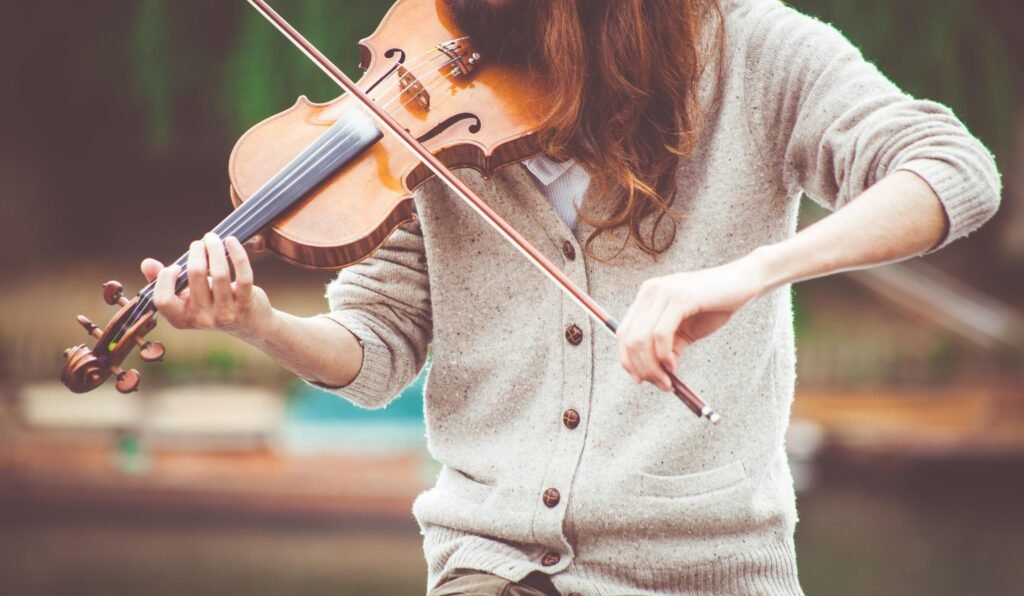
The violin and viola are pivotal in crafting the melodic and harmonic textures of baroque pop. The violin, with its bright and expressive tone, often takes the lead in creating intricate melodies that soar above the rest of the arrangement. Its ability to convey a wide range of emotions, from joyous exuberance to poignant melancholy, makes it a versatile tool in the baroque pop palette. The viola, slightly deeper in tone, complements the violin by filling in the harmonic middle ground, adding warmth and richness. Together, these instruments create a layered sound that is both dynamic and nuanced, weaving complex tapestries of sound that are characteristic of the genre.
The cello and double bass provide the foundational depth and richness that ground baroque pop arrangements. The cello, with its warm and resonant tones, bridges the gap between the higher registers of the violin and viola and the lower frequencies of the double bass. It often carries the counter-melodies or provides a rich harmonic backdrop, enhancing the emotional depth of the music. The double bass, the lowest-pitched instrument in the string family, anchors the harmonic structure with its deep, sonorous notes. It adds a sense of weight and gravity, ensuring the arrangements have a full-bodied and resonant foundation. Together, these instruments create a balanced and cohesive sound that is essential for the lush, orchestral quality of baroque pop.
Arrangement Techniques
Specific arrangement techniques are crucial in maximizing the impact of the string section in baroque pop. One common technique is the use of counterpoint, where multiple independent melodies are interwoven to create a rich and complex harmonic texture. This approach, borrowed from baroque classical music, allows each string instrument to play a distinct yet complementary role.
Another technique is the use of pizzicato, where strings are plucked rather than bowed, adding a playful and rhythmic element to the music. Additionally, dynamic swells, where the volume of the strings gradually increases or decreases, help create a sense of movement and drama. The strategic layering of strings, often with multiple violin and viola parts, enhances the lush, orchestral feel, making the arrangements sound fuller and more intricate.
Horns: Injecting Brightness and Majesty
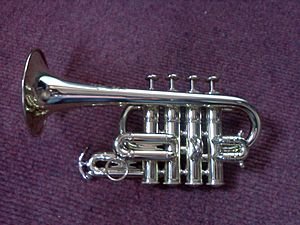
The trumpet and French horn are instrumental in adding a sense of brightness and majesty to baroque pop. The trumpet, with its clear, piercing sound, can cut through the densest of arrangements, providing a brilliant and uplifting quality. Its ability to play both bold fanfares and delicate melodies makes it a versatile addition to the baroque pop orchestra. The French horn, known for its rich, mellow tone, adds a regal and sophisticated touch. Its smooth, round sound can evoke a sense of grandeur and nobility, creating an elegant backdrop or a powerful leading voice. Together, these brass instruments infuse baroque pop with a vibrant energy and a stately presence.
Several notable baroque pop songs prominently feature horns, showcasing their ability to enhance the genre’s distinct sound. The Beatles’ “Penny Lane” utilizes a piccolo trumpet to create a bright, almost whimsical atmosphere, adding a layer of sophistication to the song’s playful melody. Love’s “Alone Again Or” features a mariachi-style trumpet solo that brings a unique flair and a touch of exoticism to the track, blending seamlessly with the lush string arrangements. The Left Banke’s “Pretty Ballerina” uses French horns to create a rich, romantic sound, underpinning the song’s melancholic melody with a sense of timeless beauty. These examples highlight how horns can elevate baroque pop songs, adding both brilliance and depth.
Contrast with Strings
Horns complement the string section by providing a contrasting timbre that enhances the overall richness and complexity of the arrangement. While strings offer warmth, depth, and a wide emotional range, horns bring clarity, brightness, and a sense of grandeur. The interplay between these sections creates a dynamic balance, where the strings lay a lush foundation and the horns inject moments of brilliance and power.
For instance, in a typical arrangement, the strings might carry the main harmonic and melodic content, creating an emotive and textured soundscape, while the horns provide punctuating highlights, soaring above the strings to draw attention and add dramatic emphasis. This contrast not only enriches the sonic palette of baroque pop but also allows for greater emotional expression and variety within the music.
Woodwinds: Bringing Color and Nuance
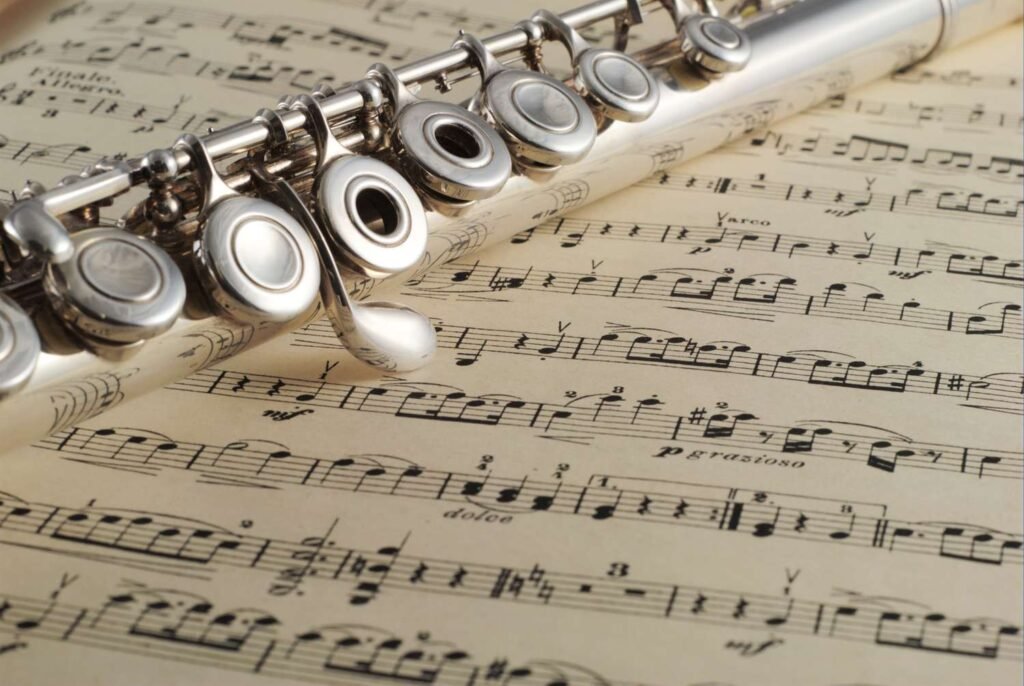
The flute and oboe are essential in adding a light, airy texture to baroque pop, infusing the music with a sense of grace and delicacy. The flute, with its bright and ethereal sound, can create soaring melodies that float above the rest of the arrangement, adding a whimsical and dreamy quality. Its ability to execute rapid, fluttering passages lends a sense of agility and lightness, making it ideal for intricate melodic lines and embellishments.
The oboe, with its distinct, slightly reedy tone, brings a lyrical and expressive voice to the mix. It can convey a wide range of emotions, from pastoral serenity to poignant melancholy, providing a unique color that enriches the harmonic palette. Together, these instruments offer a blend of brightness and subtlety that enhances the overall texture of baroque pop.
The clarinet and bassoon add darker, more complex tones to baroque pop, grounding the arrangements with their rich, warm timbres. The clarinet, versatile and capable of both smooth, lyrical lines and more robust, articulated passages, adds depth and a slightly woody resonance. It can bridge the gap between the higher-pitched woodwinds and the lower strings, creating a cohesive and balanced sound.
The bassoon, with its deep, sonorous voice, adds a layer of richness and complexity. Its ability to play both supportive bass lines and intricate melodic figures makes it a valuable addition to the orchestral texture. These instruments contribute to a darker, more introspective mood, balancing the brightness of the flute and oboe and adding a sense of sophistication and gravitas.
Layering Techniques
Effective layering of woodwinds with other instruments is crucial in creating the rich, nuanced soundscapes characteristic of baroque pop. One common technique is to use woodwinds to double the string melodies, adding a subtle sheen and reinforcing the harmonic structure without overwhelming the strings. For example, a flute might double a violin line an octave higher, adding brightness and clarity to the melody. Similarly, an oboe or clarinet might reinforce a viola or cello line, adding warmth and depth.
Another technique involves using woodwinds to fill in the harmonic gaps between the strings and brass. By carefully layering woodwinds within the arrangement, composers can create a more seamless blend of timbres. For instance, the oboe and clarinet can be used to create smooth transitions between sections, while the bassoon can provide a sturdy harmonic foundation that complements the double bass.
Dynamic swells and call-and-response patterns between woodwinds and other sections can also enhance the overall texture. For example, a passage might feature a flute and oboe playing a lyrical phrase, followed by a response from the strings, creating an engaging interplay of timbres.
By employing these layering techniques, baroque pop arrangers can achieve a well-balanced and intricately textured sound, where each woodwind instrument contributes its unique color and nuance to the overall orchestration. This meticulous blending of timbres results in a rich, multi-dimensional soundscape that defines the genre’s lush and sophisticated character.
Chamber Music Ensembles: Creating Intimacy and Complexity
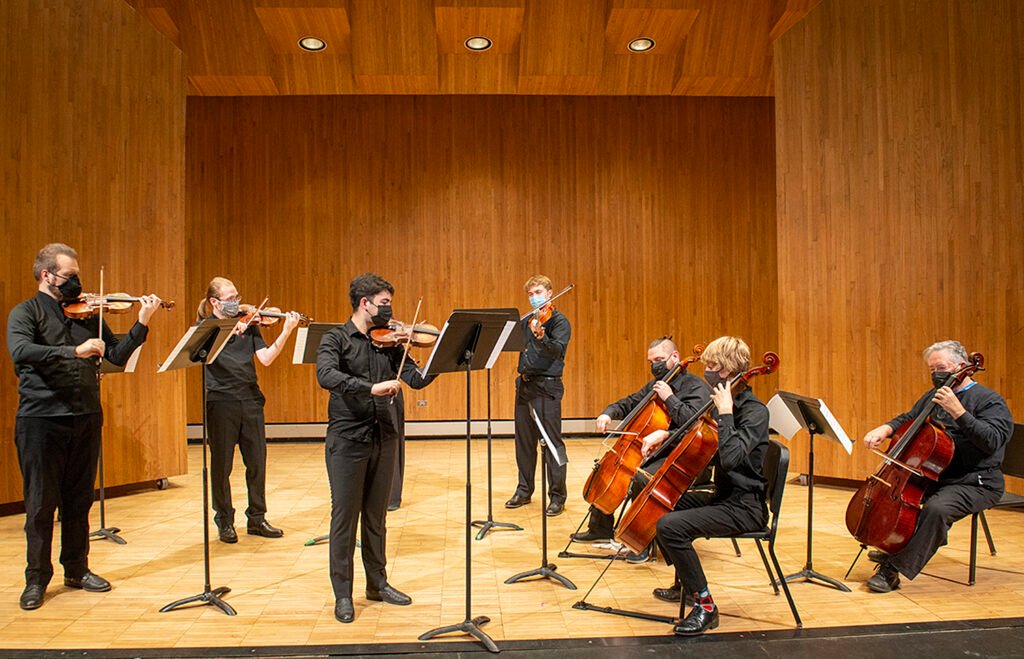
Chamber music ensembles, typically consisting of a small group of musicians, play a crucial role in baroque pop, offering a unique blend of intimacy and complexity. Unlike full orchestras, which provide a grand, sweeping sound, chamber ensembles bring a closer, more personal feel to the music. Common configurations might include a string quartet (two violins, a viola, and a cello), a woodwind quintet (flute, oboe, clarinet, bassoon, and horn), or a mixed ensemble featuring a combination of strings, woodwinds, and occasionally brass. These smaller groups allow for more intricate interplay between instruments, highlighting individual lines and creating a delicate yet richly woven musical texture.
The use of chamber music ensembles in baroque pop creates soundscapes that are both intimate and complex. The smaller number of musicians means each part can be clearly heard, allowing for detailed and nuanced performances. This setting is perfect for exploring subtle dynamics and expressive phrasing, qualities that add emotional depth and immediacy to the music. The intimacy of a chamber ensemble allows for a more conversational style of playing, where instruments respond to and interact with each other in a way that feels almost personal. This creates a sense of closeness and directness that draws the listener in, making the music feel both sophisticated and accessible.
Fusion with Modern Pop
Integrating traditional chamber music ensembles into modern pop arrangements is a hallmark of baroque pop, blending classical elegance with contemporary sensibilities. This fusion can be seen in the work of artists who seamlessly incorporate chamber music textures into their songs. For instance, the use of a string quartet in The Beatles’ “Eleanor Rigby” adds a stark, dramatic quality that complements the song’s lyrical themes. Similarly, in “She’s Leaving Home,” the combination of harp and string ensemble enhances the narrative with a poignant, classical touch.
Modern baroque pop artists continue this tradition, using chamber ensembles to add a layer of sophistication and depth to their music. Sufjan Stevens, for example, often employs strings and woodwinds to create intricate, layered arrangements that blend seamlessly with his modern folk-pop style. These ensembles are not just ornamental; they are integral to the song’s structure and emotional impact, providing counter-melodies, harmonic support, and textural variation.
The fusion of chamber music with modern pop also involves innovative arranging techniques. Composers and producers might use digital tools to blend acoustic chamber sounds with electronic elements, creating a hybrid texture that retains the intimacy of the ensemble while incorporating contemporary production techniques. This approach allows for a wide range of sonic possibilities, from the lush and organic to the polished and futuristic.
Case Studies: Exemplary Baroque Pop Tracks
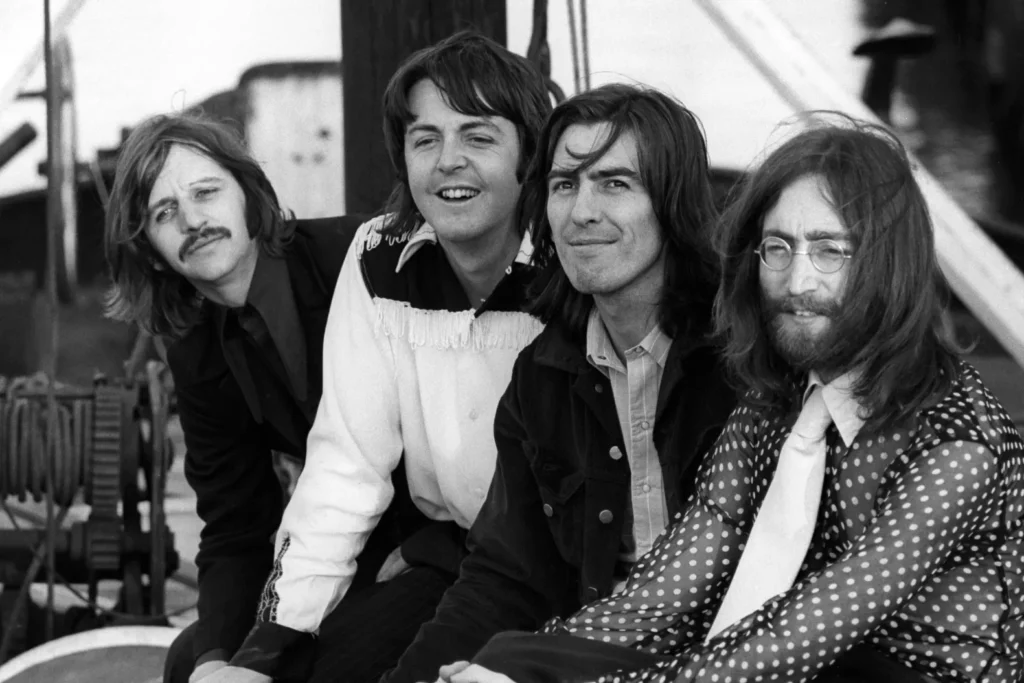
The Beatles – “Eleanor Rigby”
Detailed Analysis: “Eleanor Rigby,” released in 1966 on The Beatles’ album Revolver, is a quintessential example of baroque pop that showcases the use of diverse instrumentation to create a poignant and sophisticated sound. The track is notable for its stark arrangement, featuring a double string quartet (four violins, two violas, and two cellos) arranged by producer George Martin.
The strings are used to great dramatic effect, with the violins and violas providing sharp, staccato rhythms that convey a sense of urgency and tension, while the cellos offer a somber, grounding presence. This classical setup is juxtaposed with the modern pop structure, creating a unique fusion that highlights the narrative of loneliness and despair in the lyrics. The use of the string ensemble without any traditional rock instruments (guitar, bass, drums) was groundbreaking at the time and set a new standard for orchestral integration in pop music.
The Beach Boys – “God Only Knows”
Detailed Analysis: “God Only Knows,” from The Beach Boys’ 1966 album Pet Sounds, is another iconic baroque pop track that exemplifies the genre’s lush and layered sound. The song’s arrangement, crafted by Brian Wilson, features a rich tapestry of instruments, including strings, horns, and woodwinds, alongside traditional pop instruments.
The strings in “God Only Knows” provide a warm, enveloping backdrop that enhances the song’s emotional depth. The use of a French horn in the introduction adds a touch of majesty and sets a reflective tone. Throughout the track, flutes and clarinets weave in and out, adding light, airy textures that lift the melody. The interplay between these classical elements and the pop structure creates a timeless sound that remains a high point in baroque pop.
Love – “Alone Again Or”
Detailed Analysis: “Alone Again Or,” from Love’s 1967 album Forever Changes, is a standout example of baroque pop that incorporates a variety of orchestral instruments to create a complex, layered sound. The song opens with an acoustic guitar and is soon joined by a mariachi-style trumpet, which adds a distinctive flair and a sense of grandeur.
Strings are used subtly but effectively throughout the track, providing a lush backdrop that complements the vocal harmonies and the acoustic instrumentation. The arrangement also features intricate counter-melodies played by the trumpet and string sections, which enrich the harmonic complexity of the song. This blend of classical and Latin influences, coupled with the pop sensibility, makes “Alone Again Or” a unique and enduring example of baroque pop.
The Left Banke – “Walk Away Renée”
Detailed Analysis: “Walk Away Renée,” released by The Left Banke in 1966, is a quintessential baroque pop song that features a prominent string arrangement alongside traditional pop instrumentation. The track opens with a harpsichord, immediately setting a baroque tone. The strings, arranged by band member Michael Brown, are used to create a sweeping, romantic sound that underscores the song’s melancholic lyrics.
The violins and cellos provide lush, melodic lines that intertwine with the lead vocals, enhancing the emotional impact of the song. The use of woodwinds, including a flute that plays a counter-melody during the bridge, adds an additional layer of complexity and color to the arrangement. The combination of these elements creates a rich, textured sound that exemplifies the baroque pop style.
The Evolution and Legacy of Baroque Pop Instrumentation
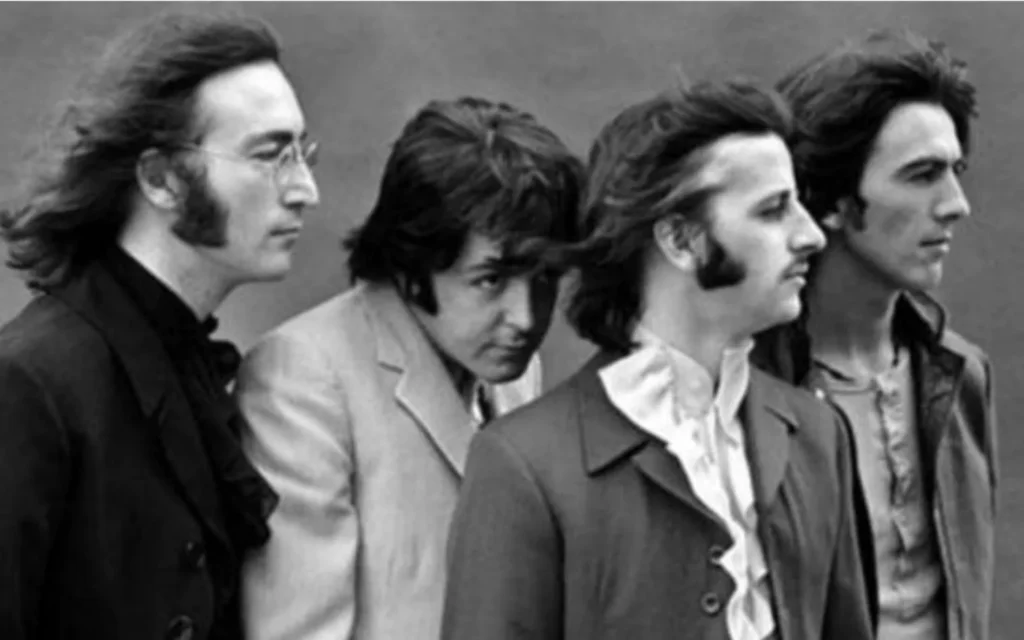
The use of orchestral instruments in baroque pop has undergone significant evolution since the genre’s inception in the 1960s. Initially, artists like The Beatles and The Beach Boys pioneered the integration of classical elements into pop music, using strings, harpsichords, and brass to add complexity and depth to their songs. As the genre matured, artists began experimenting with more diverse and sophisticated arrangements, incorporating full orchestras and exploring a wider range of instruments such as woodwinds and exotic percussion.
In the 1970s and 1980s, baroque pop’s influence waned as electronic and synthesized sounds became more prominent in pop music. However, the 1990s and 2000s saw a resurgence of interest in orchestral pop, as indie and alternative artists began to draw on the genre’s rich, layered sound. Bands like Belle and Sebastian and artists like Rufus Wainwright revived the use of strings and brass in their arrangements, often combining them with modern production techniques to create a fresh take on the baroque pop aesthetic.
Influence on Modern Music
The legacy of baroque pop instrumentation is evident in many contemporary genres. Indie pop and rock have embraced the lush, orchestral soundscapes pioneered by baroque pop artists, often using strings, horns, and woodwinds to add emotional depth and sophistication to their music. Bands like Arcade Fire and Florence + The Machine are known for their grand, sweeping arrangements that echo the baroque pop tradition.
In addition to indie music, baroque pop has influenced genres such as chamber pop and orchestral pop, where the emphasis on elaborate, multi-layered arrangements remains strong. The use of classical instrumentation has also found its way into mainstream pop and hip-hop, with artists like Kanye West and Beyoncé incorporating orchestral elements to create a sense of grandeur and drama in their productions.
Future Directions
Looking ahead, the future of pop music orchestration is likely to continue evolving, blending traditional orchestral elements with cutting-edge technology. As digital tools and software become more advanced, we can expect to see more innovative and hybrid approaches to instrumentation. Virtual orchestras and synthesized instruments may become more sophisticated, allowing artists to create rich, complex arrangements without the need for live orchestras.
Moreover, as genres continue to blend and boundaries blur, we might see baroque pop influences merging with electronic music, ambient, and even hip-hop in new and unexpected ways. Artists will likely explore more experimental uses of orchestral instruments, pushing the limits of traditional soundscapes and creating new, genre-defying music.
